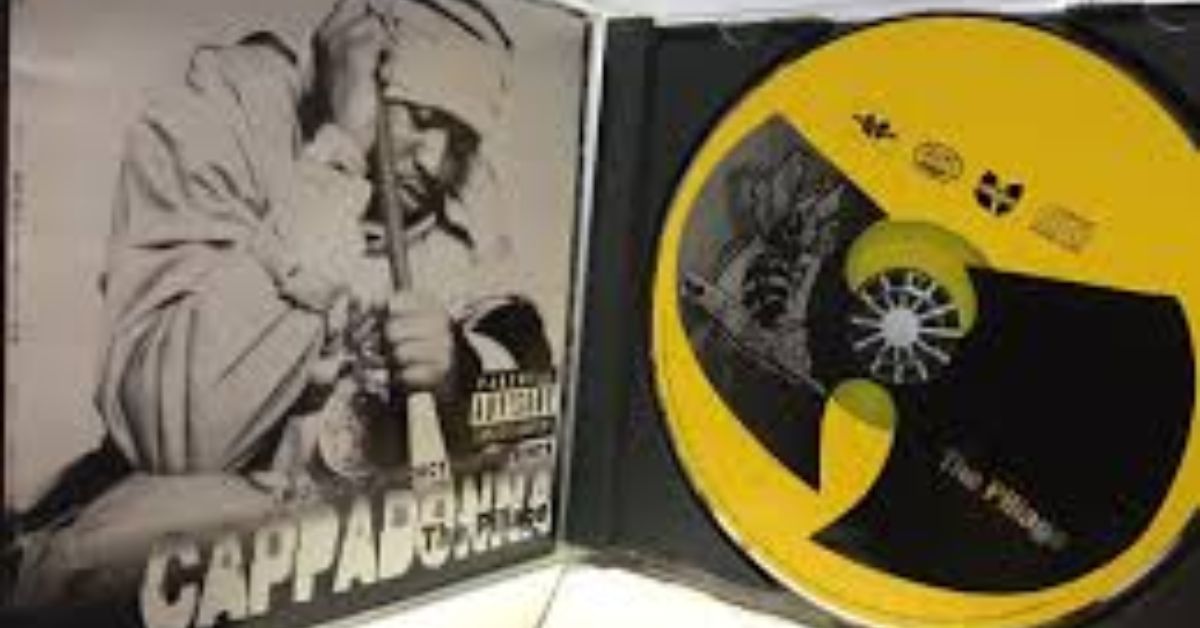Boombapreviews the pillage stands as one of the most iconic and influential hip-hop albums, especially in the boom bap genre. Released by Cappadonna—a key member of the legendary Wu-Tang Clan—in 1998, “The Pillage” represents the raw, gritty sound that epitomized 90s East Coast hip-hop. With BoombapReviews focusing on the critical analysis and appreciation of classic boom bap records, it’s only fitting that “The Pillage” gets a thorough examination.
This article will explore the album’s production, lyrical content, its place in hip-hop history, and how it was received at the time of release. Through the lens of BoombapReviews, we will also highlight the importance of this album in shaping the sound of underground hip-hop, its long-term impact, and the cultural significance it still holds today.
1. Overview of Boombapreviews the pillage Album
Boombapreviews the pillage Released on March 24, 1998, “The Pillage” is the debut solo album of Cappadonna, a rapper closely associated with the Wu-Tang Clan. With strong lyrical performances, gritty beats, and a distinct East Coast sound, the album has achieved a revered status in boom bap hip-hop circles. Not only does it showcase Cappadonna’s lyrical ability, but it also features collaborations with other notable Wu-Tang members, including Method Man, RZA, and Ghostface Killah.
The album achieved commercial success, debuting at number 3 on the Billboard 200, a significant feat for a boom bap album at the time. “The Pillage” went on to receive praise for its raw authenticity and adherence to the classic Wu-Tang sound.
2. The Legacy of Cappadonna and Wu-Tang Clan
Cappadonna, while often considered a “peripheral” member of the Wu-Tang Clan, has played a significant role in shaping the group’s sound and legacy. His contributions to Raekwon’s “Only Built 4 Cuban Linx…” and Ghostface Killah’s “Ironman” cemented his reputation as a fierce lyricist. By the time “The Pillage” dropped, Cappadonna was already well-known among Wu-Tang fans.
The Wu-Tang Clan itself is one of the most influential groups in hip-hop history. With their unique blend of kung-fu references, philosophical musings, and gritty street narratives, Wu-Tang changed the landscape of hip-hop in the 90s, paving the way for solo projects like “The Pillage.”
3. The Boom Bap Genre and Its Influence on Boombapreviews the pillage
Boom bap is a subgenre of hip-hop characterized by heavy, gritty beats with prominent kick drums and snare patterns. The sound is often associated with East Coast hip-hop, with groups like A Tribe Called Quest, Gang Starr, and Wu-Tang Clan being notable contributors.
In “The Pillage,” Cappadonna fully embraces the boom bap style, with production handled by RZA, True Master, and other Wu-Tang affiliates. The hard-hitting beats serve as the perfect backdrop for Cappadonna’s raw storytelling and lyrical prowess. From the opening track to the closer, the album stays true to the boom bap ethos, favoring minimalist yet impactful instrumentals.
4. Track-By-Track Breakdown of Boombapreviews the pillage
1. “Slang Editorial”
The opening track sets the tone with Cappadonna showcasing his signature street slang and aggressive delivery. The beat, produced by True Master, complements the raw energy of the song.
2. “Pillage”
The title track captures Cappadonna’s themes of survival and street life, with a haunting production that echoes Wu-Tang’s signature sound.
3. “Run”
Featuring Ghostface Killah, “Run” is a standout track that explores themes of paranoia and evasion from law enforcement, with Cappadonna’s vivid imagery bringing the story to life.
4. “Milk the Cow”
A track about hustling and making money by any means necessary, this song has a more laid-back beat, but Cappadonna’s lyrics remain sharp.
5. “Supa Ninjaz”
With guest appearances by U-God and Method Man, this track blends kung-fu references with street rhymes, a classic Wu-Tang theme.
5. Lyrical Analysis: Cappadonna’s Storytelling and Wordplay
Cappadonna’s strength lies in his storytelling and ability to paint vivid pictures of life in the streets of New York. He blends slang, metaphor, and wordplay to create a lyrical tapestry that connects with the listener on multiple levels.
Key Lyrical Themes:
- Survival: Many tracks on “The Pillage” focus on survival in the urban jungle, touching on the challenges of growing up in low-income neighborhoods.
- Street Wisdom: Cappadonna often positions himself as a mentor, offering wisdom to those living similar experiences.
- Nostalgia for the Streets: Even when discussing harsh realities, there is an underlying nostalgia and respect for the streets that shaped him.
6. Production and Beats: The Backbone of the Album
The production on “The Pillage” is quintessential Wu-Tang—gritty, sample-heavy, and steeped in East Coast boom bap tradition. RZA, the mastermind behind much of Wu-Tang’s sound, contributes to the album, ensuring it retains the signature Wu-Tang aesthetic.
Notable Producers:
- True Master: Contributed to several key tracks, including “Slang Editorial” and “Pillage.”
- RZA: Though his presence on the album is limited compared to other Wu-Tang projects, his influence is unmistakable in the overall sound.
- 4th Disciple: Another Wu-Tang affiliate who brings his unique touch to tracks like “Dart Throwing.”
7. Key Features on “The Pillage”
Like most Wu-Tang solo projects, “The Pillage” features notable appearances from fellow Wu-Tang Clan members, including Method Man, U-God, and Ghostface Killah. These collaborations add depth to the album, reinforcing the familial nature of Wu-Tang projects while showcasing each artist’s individual strengths.
8. Why “The Pillage” Stands Out Among Boom Bap Classics
While many albums of the boom bap era are revered, “The Pillage” stands out for several reasons. For one, it’s a debut album that encapsulates Cappadonna’s distinct voice within the Wu-Tang universe. Unlike other solo efforts from Wu-Tang members, “The Pillage” doesn’t try to reinvent the genre—it fully embraces the boom bap ethos and amplifies it.
9. BoombapReviews Take on the Best Songs from the Album
BoombapReviews often highlights standout tracks that define an album. From “Slang Editorial” to “Run”, the site praises Cappadonna’s ability to maintain energy across different moods and tempos. “Run”, in particular, gets special recognition for its storytelling, while “Supa Ninjaz” is lauded for its collaborative spirit.
10. Cultural and Social Themes in “The Pillage”
Beneath the raw lyrics and gritty beats, “The Pillage” touches on several cultural and social issues. Poverty, survival, and the urban experience are recurring themes, as Cappadonna provides a lens into life on the streets of New York. He also explores the consequences of economic disparity, systemic racism, and the struggle to rise above one’s circumstances.
11. How “The Pillage” Was Received at Release
Upon its release, “The Pillage” received positive reviews from both fans and critics. The album’s commercial success, debuting at number 3 on the Billboard 200, was a testament to Cappadonna’s talent and the strength of the Wu-Tang brand. Many critics praised the album for staying true to the boom bap sound while delivering fresh and unique content.
12. The Pillage vs. Other Wu-Tang Solo Projects
In comparison to other Wu-Tang solo efforts, such as **GZA’s “
Liquid Swords”** or Raekwon’s “Only Built 4 Cuban Linx…”, “The Pillage” is often considered underrated. While it doesn’t have the same level of widespread acclaim, its adherence to classic boom bap and Cappadonna’s distinct voice make it a hidden gem in the Wu-Tang discography.
13. Long-Term Influence of “The Pillage” on Hip-Hop
Over two decades later, “The Pillage” continues to influence new generations of hip-hop artists, particularly those drawn to lyrical complexity and boom bap production. Artists in the underground scene often cite Cappadonna’s work as a major inspiration, especially in the way he blends street narratives with intricate wordplay.
14. Challenges and Criticism: What Could Have Been Improved?
While “The Pillage” is a beloved album, it’s not without its critiques. Some listeners argue that the album lacks cohesion at times, with certain tracks feeling disconnected from the overall narrative. Additionally, Cappadonna’s flow—unique as it is—can feel repetitive over the course of a full album.
15. Conclusion: Why
“The Pillage” is more than just a debut album; it’s a snapshot of a critical moment in hip-hop history. As boom bap began to evolve and fade in the late 90s, Cappadonna’s contribution helped keep the essence of the genre alive. With its gritty production, compelling features, and Cappadonna’s distinct lyrical style, “The Pillage” remains a must-listen for fans of boom bap and classic hip-hop alike.
FAQs
1. What makes “The Pillage” a significant album in hip-hop history?
“The Pillage” showcases Cappadonna’s unique voice within the Wu-Tang Clan and stands as a strong representation of boom bap hip-hop during the late 90s.
2. How does “The Pillage” compare to other Wu-Tang solo albums?
While it may not have achieved the same level of acclaim as “Liquid Swords” or “Only Built 4 Cuban Linx…”, “The Pillage” remains a standout for its gritty production and lyrical depth.
3. What are the best tracks on “The Pillage”?
Standout tracks include “Slang Editorial”, “Run”, and “Supa Ninjaz”, all of which display Cappadonna’s versatility and storytelling ability.
4. How did fans and critics react to “The Pillage” upon its release?
“The Pillage” was well-received, debuting at number 3 on the Billboard 200 and earning praise for its raw, authentic sound.
5. Is “The Pillage” still relevant today?
Yes, “The Pillage” continues to influence underground hip-hop artists and is considered a boom bap essential by fans of classic East Coast hip-hop.




